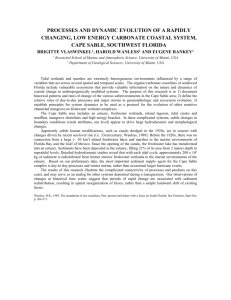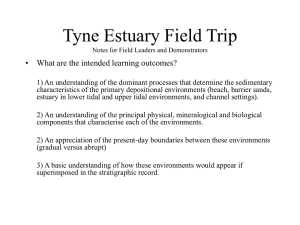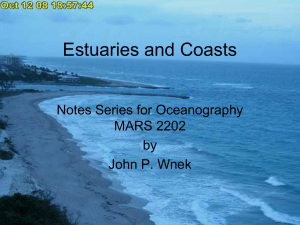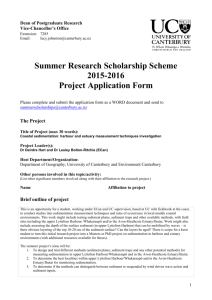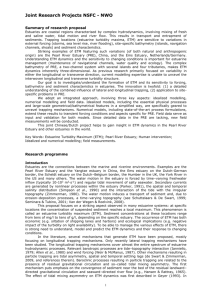Phil Duzinski - Institute of Marine and Coastal Science
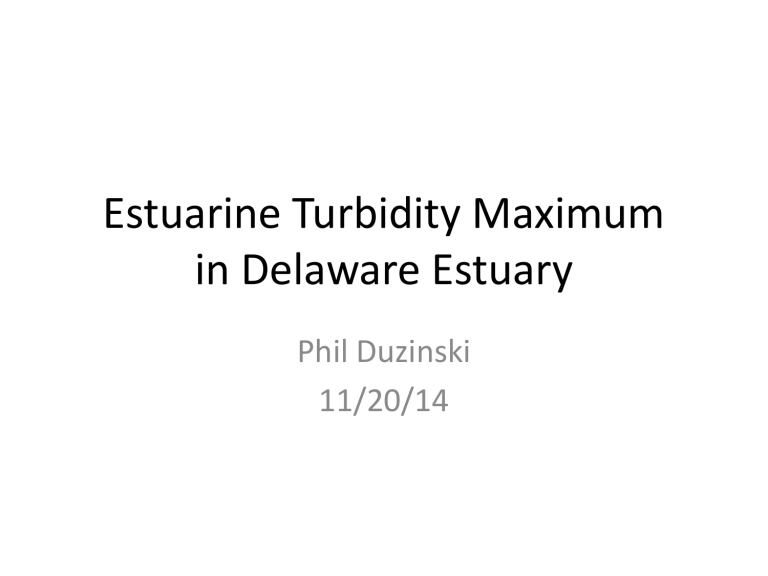
Estuarine Turbidity Maximum in Delaware Estuary
Phil Duzinski
11/20/14
NC
BC
BH
Overview of estuary
• Coastal plain estuary, partially stratified to well‐mixed salinity structure
• Mean salt intrusion
97 km from mouth
• 1.3
10 6 mt per year dredged from ETM
(2.6
10 6 m 3 )
Sommerfield, 2010
ETM dynamics
• “Sediment trap” formed by gravitational circulation where seaward barotropic fresh water river discharge interacts with landward baroclinic flow from saline marine water (Schubel, 1968)
• Interactions between density driven buoyancy and barotropic tidal asymmetries in flood-dominated systems
(Chant & Stoner, 2001)
• Combination of gravitational circulation, tidal asymmetry, and tidal pumping of salt control location of ETM and sediment deposition (Sommerfield & Wong, 2011)
• Impacts on biogeochemical and primary productivity
Vertical mixing from tidal asymmetry in
Navesink River, NJ
• Ebb: light water over heavy – stable
• Flood: heavy water over light – unstable
Chant and Stoner, 2001
Estuarine Gravitational Circulation
Sommerfield, 2010
Estuarine Turbidity Maximum
Sommerfield, 2010
Impacts of tidal pumping on salinity and null point
• The limit of salt intrusion extends 10‐20 km landward of the null point and ETM core due to tidal pumping of salt
Sommerfield and Wong, 2011
Variability of Sediment Influx and Turbidity
Sommerfield and Wong, 2011
References
• Chant and Stoner, 2001: Particle trapping in a stratified flood‐dominated estuary,
J. Mar. Res., 59, 29–51.
• Gebert, Sommerfield and Walsh, 2013: Sources, sinks and budget of fine grain sediment in Delaware Estuary, Delaware Science and Environmental Summit,
Cape May, NJ
• Delaware Estuary Regional Sediment Management Plan, 2013: Sediment Quantity and Dynamics White Paper
• Schubel, 1968: Turbidity maximum of the northern Chesapeake Bay, Science, 161,
1013–1015.
• Sommerfield, 2010: Regional Sediment Management Workshop, John Heinz
National Wildlife Refuge, Philadelphia, PA
• Sommerfield and Wong, 2011: Mechanisms of sediment flux and turbidity maintenance in the Delaware Estuary, J. Geophys Res, 116, C01005

